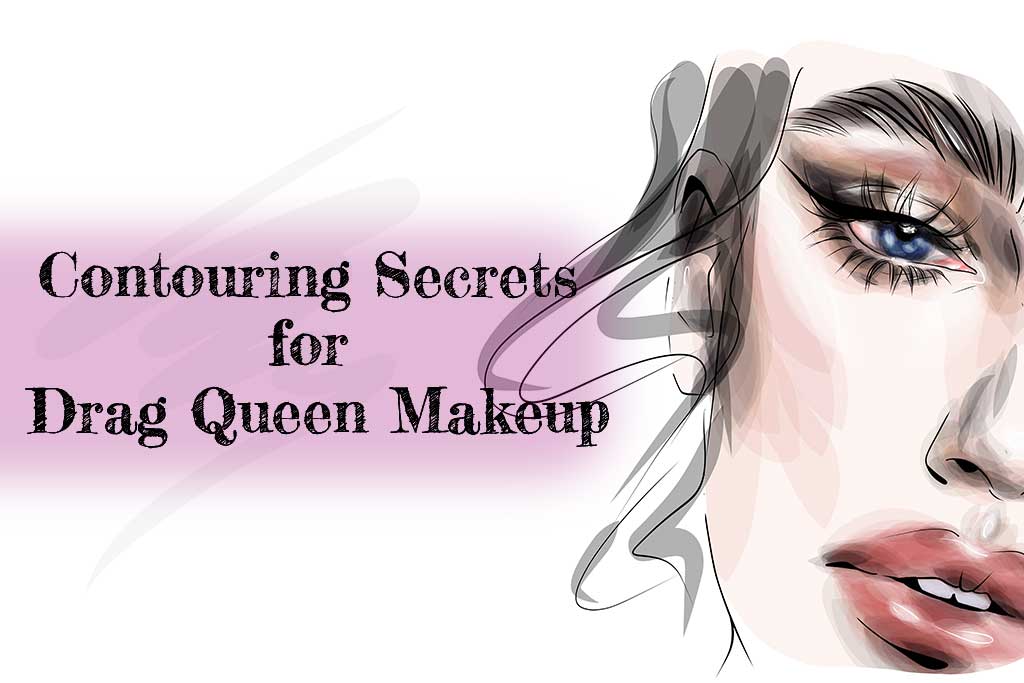
Hello, beautiful people! Welcome to another exciting journey where we uncover the secrets of the stunning world of drag queen makeup. Today, we’re revealing the magic behind one of the essential elements of this craft: contouring techniques. Let’s dive right in, shall we?
The Art of Contouring in Drag Queen Makeup
Contouring in drag makeup is a transformative technique that allows artists to craft and sculpt their facial features into their desired aesthetic. It is an art form that requires understanding of anatomy, light, and shadow. In drag makeup, contouring isn’t merely about creating a sharper jawline or defining cheekbones. It’s about creating a character, a persona, and using makeup as a medium to shape that identity.
At the heart of contouring lies the principle of light and shadow. By applying darker shades (contour) and lighter shades (highlight), you’re creating an illusion of depth and dimension. The dark shades mimic shadows and recede the areas of the face you apply them to, whereas the light shades bring forward the areas of the face you want to emphasize. This play of light and shadow allows you to shape your face, creating sharper cheekbones, a more defined nose, and a chiseled jawline.
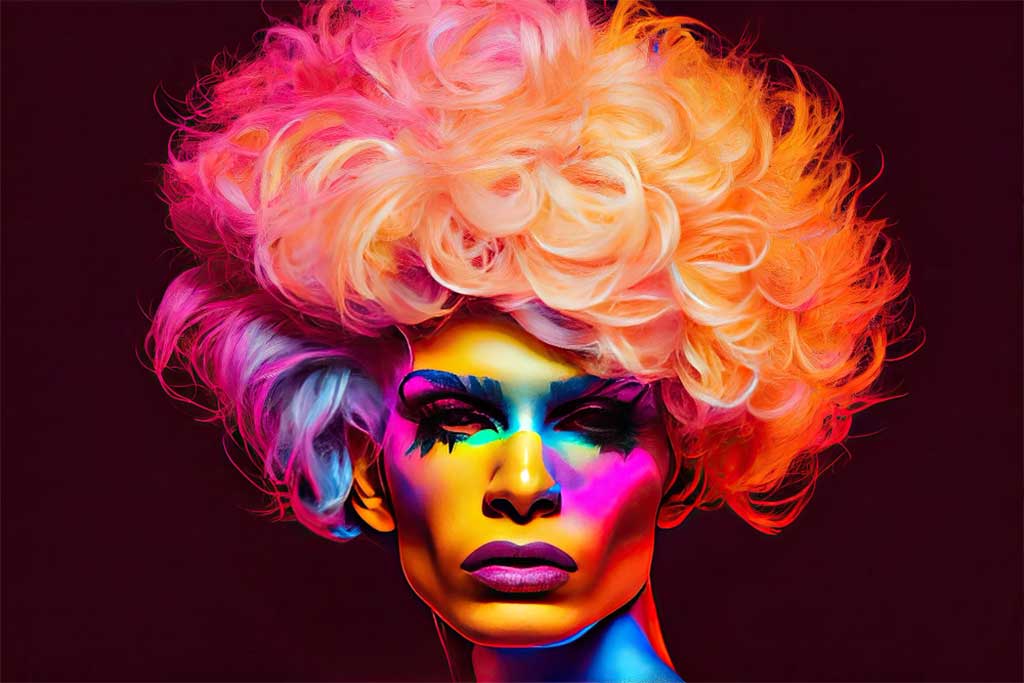
Why is Contouring So Essential in Drag Makeup?
In the spotlight, under the dazzling stage lights, natural features can often look washed out. This is where contouring comes into play in drag makeup. It serves to exaggerate and dramatize facial features, making them stand out. But more importantly, it allows the artist to construct a face that aligns with their character’s persona, whether it be a sultry siren, a glamorous diva, or a cheeky comic.
Contouring in drag makeup also allows for facial feminization or masculinization, depending on the drag artist’s character and performance. With the power of contouring, soft, feminine features can be created by emphasizing the cheekbones, slimming the nose, and softening the jawline. Conversely, more masculine features can be achieved by enhancing the brow bone, creating a more prominent jawline, and broadening the appearance of the nose.
Understanding Your Face Shape
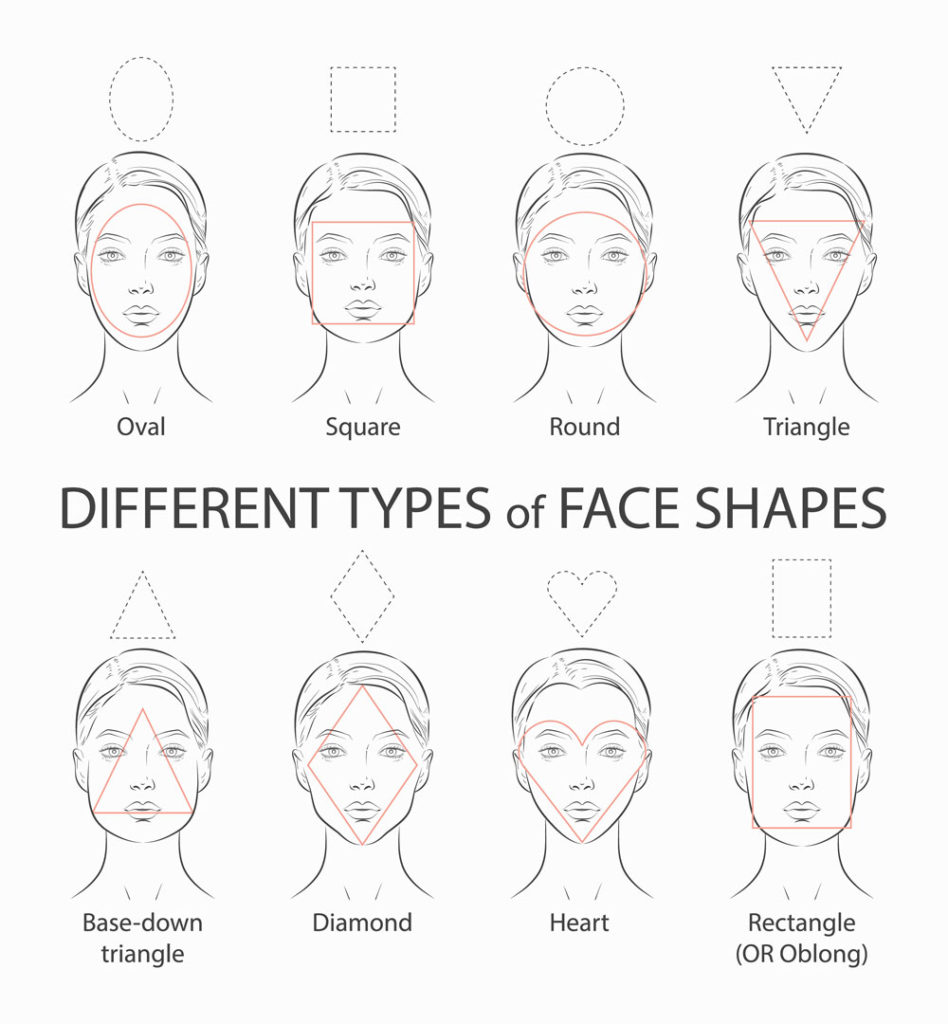
Understanding your face shape is the first step towards effective contouring. Everyone’s face is different, and contouring is not a one-size-fits-all process. The aim is to create a balanced, symmetrical look that best highlights your features.
There are generally considered to be six face shapes: oval, round, square, heart, diamond, and oblong. Each of these shapes has unique characteristics and areas that can be emphasized or de-emphasized with contouring.
- Oval faces are balanced and evenly proportioned. Contouring for an oval face is typically focused on enhancing the natural balance of the face.
- Round faces are wide and full with a round chin and hairline. Contouring for a round face often involves creating the illusion of length and defining the facial structure.
- Square faces have strong, well-defined angles in the forehead, cheeks, and jawline. Contouring for a square face can help soften these strong angles.
- Heart-shaped faces are wider at the forehead and narrow down to a pointy chin. Contouring for a heart-shaped face can help balance the narrower chin and wider forehead.
- Diamond faces are narrow at the forehead and jawline, with the widest part of the face being the cheeks. Contouring for a diamond face often involves softening the cheekbones and creating the illusion of a wider forehead and jawline.
- Oblong faces are longer than they are wide and often have a long, straight cheek line. Contouring for an oblong face can create the illusion of a shorter face.
>>First Time Drag Transformation: A Complete Guide for Beginners<<
Knowing your face shape will help guide your contouring, assisting you in deciding where to place your highlights and shadows to achieve the most flattering results.
Remember, the goal of understanding your face shape isn’t to completely change your face
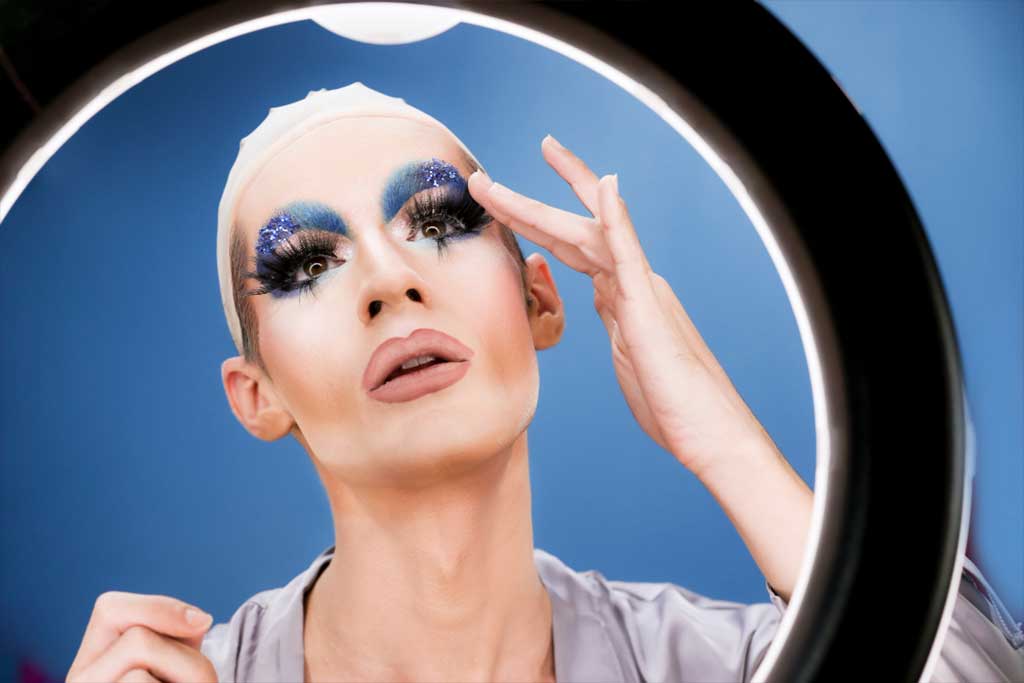
Contouring Techniques Unveiled
Contouring is much more than just applying makeup. It’s about understanding the structure of your face and using light and shadow to redefine and enhance your features. Let’s unravel the step-by-step process of how to use contouring techniques in drag queen makeup.
Understanding the Concept of Contouring
At its core, contouring is a makeup technique that uses shadows and highlights to create an illusion of depth and dimension on the face. This illusion can help transform the appearance of your facial features, making some areas recede and others stand out. In drag makeup, contouring is not just used for enhancing or diminishing features, but it can also be used to create a more exaggerated, theatrical look that’s full of personality.
Choosing the Right Products
Successful contouring relies heavily on the right products. For drag makeup, full coverage is key. You’ll need a foundation that matches your skin tone for a seamless base, a contour product (cream or powder) that is two shades darker than your skin tone to create shadows, and a highlight product that is two shades lighter to bring features forward.

Mastering the Technique
1. Preparing Your Canvas
Before you start contouring, it’s crucial to create a smooth, flawless base. This involves cleansing, moisturizing, and priming your skin. Then, apply a full-coverage foundation that matches your skin tone. A good base will ensure your contour blends seamlessly and stands out in the right way.
2. Mapping Your Face
Next, using a contour stick or cream, start by mapping your face. This process involves drawing lines on the areas you want to recede or push back. Typically, these areas include the sides of your nose, the hollows of your cheeks, your temples, and your jawline. Remember, your face shape will guide this process. For example, if you have a round face, you might want to contour your temples and jawline more heavily to create a more elongated illusion.
3. Blending
Blending is perhaps the most critical step in contouring. It’s not enough just to draw lines on your face; you need to blend them out to create a natural gradient of shadow and light. You can use a damp makeup sponge or a contour brush for this. Remember to blend upwards when working on your cheeks to create a lifted effect.
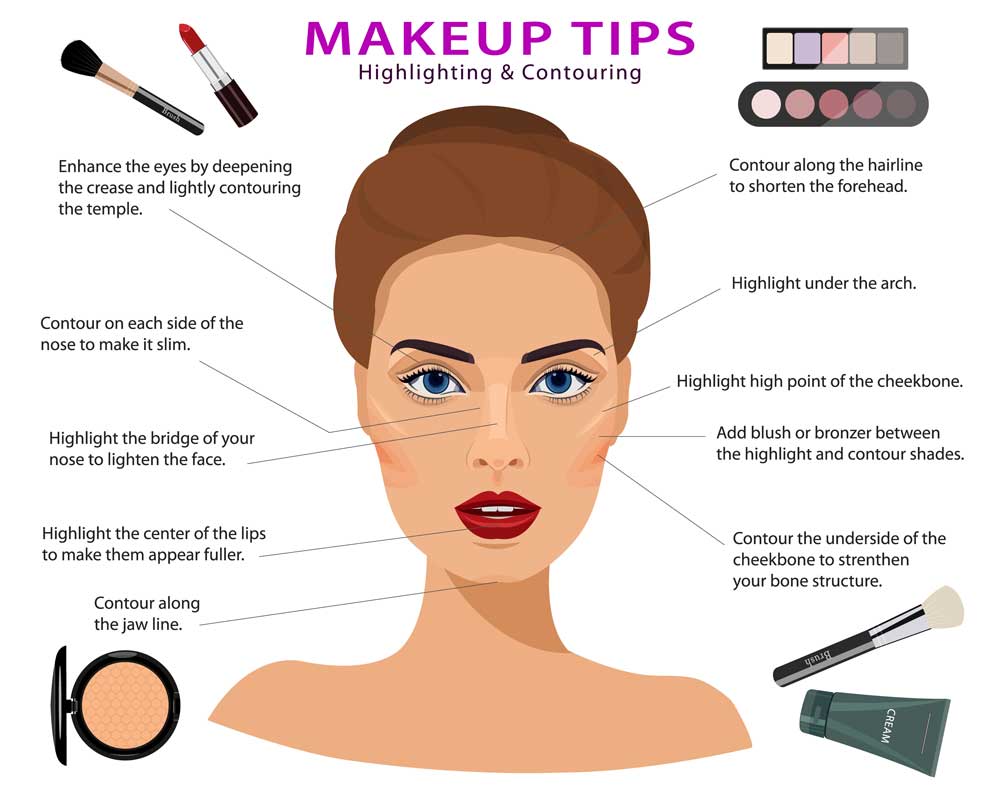
4. Highlighting
Once you’ve blended your contour, it’s time to highlight. Apply a lighter shade of concealer or cream on the areas you want to bring forward or emphasize. These areas typically include the center of your forehead, the bridge of your nose, your cheekbones, and your chin.
5. Setting Your Makeup
After you’ve contoured and highlighted, it’s essential to set your makeup with a setting powder. This step ensures your contouring stays in place and doesn’t smudge or fade during your performance. Apply a translucent setting powder all over your face, concentrating more on the areas you’ve highlighted.
6. Final Touches
Finally, add some warmth back into your face with a bronzer, which can be applied in your contour areas but not as narrowly confined. Follow up with a blush on the apples of your cheeks to give a healthy glow. To complete your look, use a setting spray to lock in your makeup, giving it longevity and preventing it from moving or sliding off.
Remember, practice makes perfect. It might take some time to get used to contouring, but once you master it, you’ll be able to create a variety of looks and personas, pushing the boundaries of your drag performance.
Practicing and Perfecting
Contouring, especially in drag makeup, requires practice. Each face is unique, so it may take some time to discover what placements and techniques work best for you. The key is to experiment, practice, and have fun with it.
Remember, makeup is an art form, and contouring is one of the tools in your artistic arsenal. Use it to express yourself, create characters, and transform your appearance in the captivating world of drag.
Wrapping Up: Power of Contouring in Drag Makeup
Contouring in drag makeup is more than just a technique; it’s a transformative art form that allows for the creation of captivating, dramatic characters. It’s about understanding your face, playing with light and shadows, and defining or redefining features to create a look that’s uniquely yours. With practice and creativity, contouring can elevate your drag makeup to new heights.
Remember, makeup in the world of drag is about self-expression and creativity. Don’t be afraid to experiment, try new things, and push the boundaries. It’s through this exploration and experimentation that you can truly discover your style and make your mark in the vibrant world of drag.
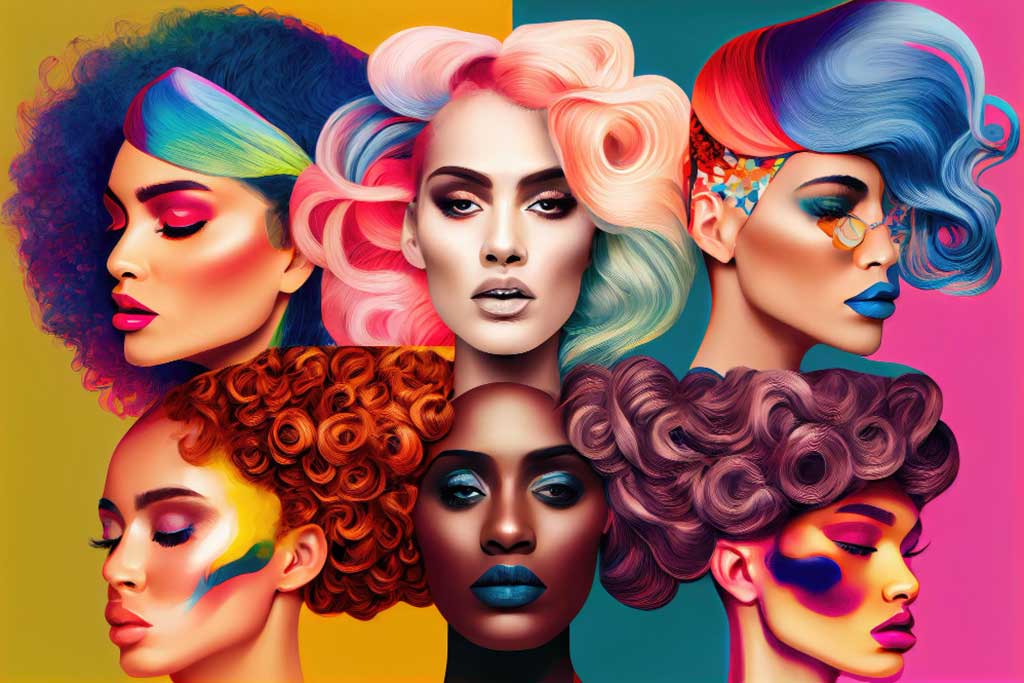
Ready to Elevate Your Drag Makeup Game?
We hope this guide has provided you with a deeper understanding of contouring techniques in drag makeup. Now it’s your turn to put these techniques into practice. Pick up your makeup brush, look in the mirror, and start creating. And remember, makeup isn’t about perfection, but about expression. So, keep practicing, keep learning, and most importantly, keep having fun.
If you have any questions, tips, or insights you’d like to share, or if you’d like more tutorials on drag makeup techniques, let us know in the comments section. We’d love to hear from you and support you on your drag makeup journey.
And don’t forget to share your looks with us on social media using the hashtag #DragQueenMakeupMagic. We can’t wait to see how you transform your canvas!
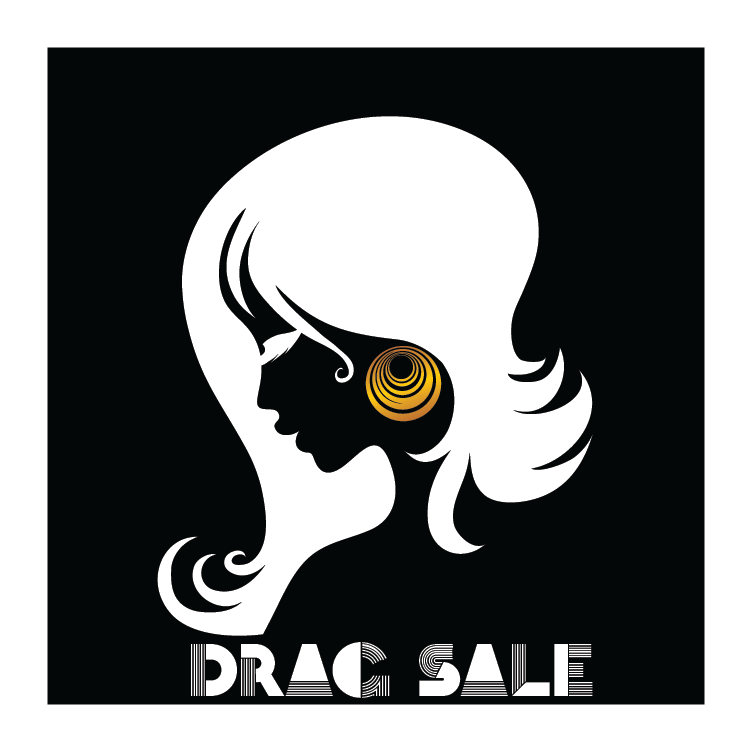
[…] Professional Makeup Advice: This forum thread on Crossdresser Heaven is a great place to ask all your makeup and skincare questions. […]